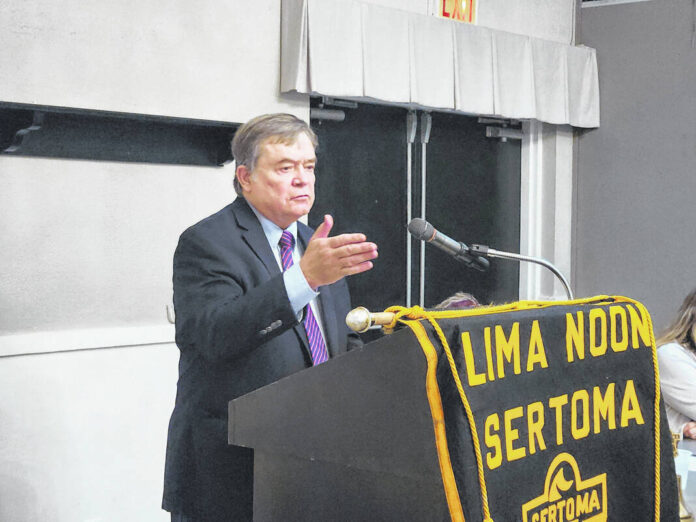LIMA — While courts have the mandate to determine appropriate punishments for crimes, several courts in Ohio have also been working to create a pathway to a better life for people whose addictions put them into the court system in the first place.
Judges from Lima Municipal Court visited the Lima Sertoma Club Thursday to offer insights into that court’s experiences in the drug court process, in which a person arrested for crimes in which addiction played a factor is given the opportunity for treatment rather than incarceration. To date, 168 participants have been or are currently in the program, with 66 of them completing it. Participants can enter it voluntarily and typically remain in the program for about a year and a half, according to Judge David Rodabaugh.
“This is not short-term,” he said. “It can be hard for us to encourage them to go through the program. It’s not easy. It’s difficult.”
Meeting twice a month with either Rodabaugh or Judge Tammie Hursh, participants work with a variety of area treatment providers, such as Coleman Behavioral Services, UMADOAP, Brightview Health or others. Once the commitment to the program has been made, the task for the drug court team is to help the participant get stabilized off the drugs and then put in place a recovery plan that could include counseling, peer meetings, medication, training and other resources.
One of the primary goals of the court is to get the participant into a situation where they are not dealing with the temptation to relapse, Rodabaugh said.
“We want them to stay away from the people that brought them into the addiction,” he said.
A specialized program for veterans was implemented in 2020 in which the treatment team coordinates with the Dayton VA or a community-based treatment provider to provide specialized care for veterans whose substance abuse may stem from service-related mental and emotional health issues. These programs not only help with treatment, but also reentering society, including assistance in finding employment and helping participants reunite with children and other family members.
“Before we started our treatment court, we were seeing so many people who were dying, particularly ones who were in jail,” Hursh said. “So at the time we were discussing it, we felt that if we could just save one, it would be worth it.”







